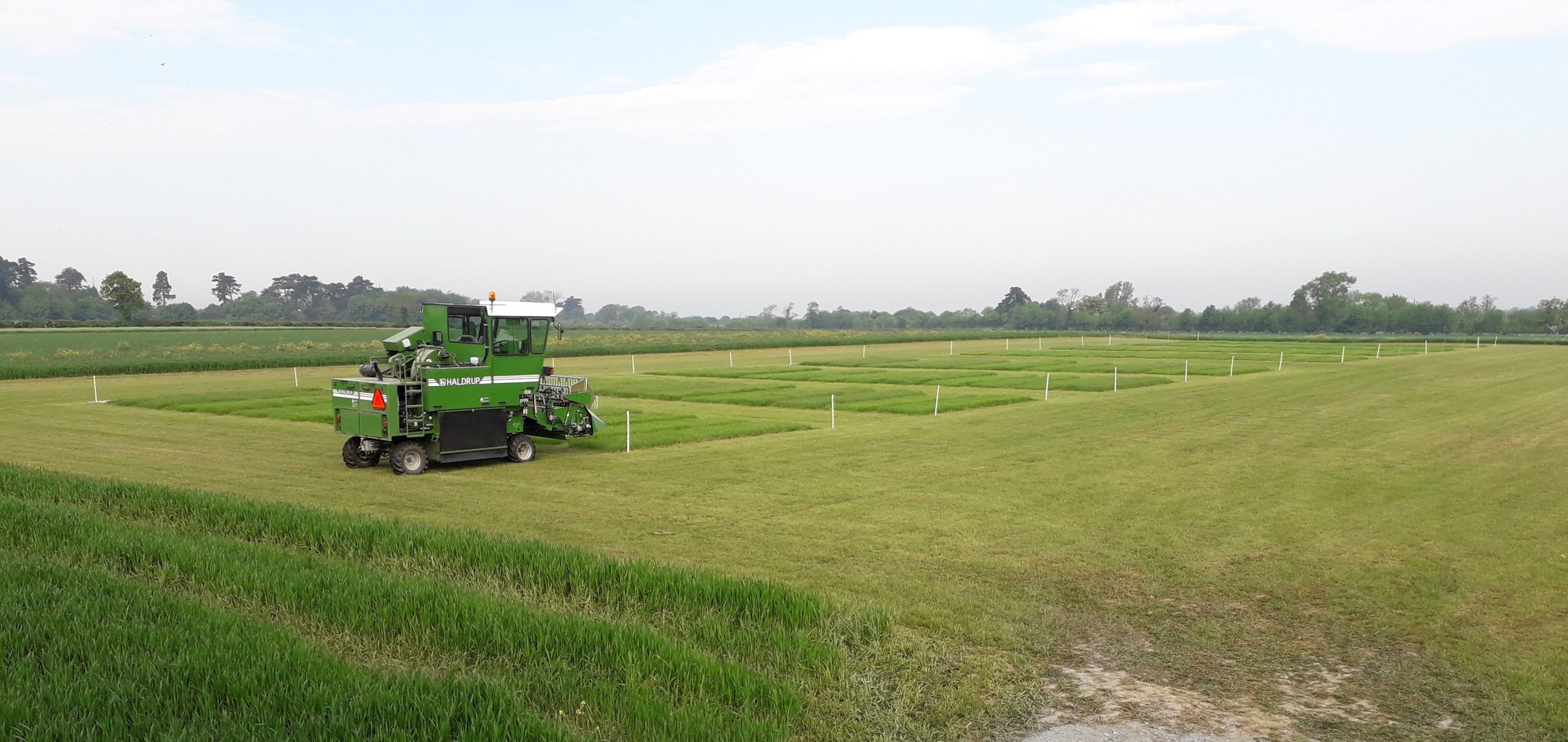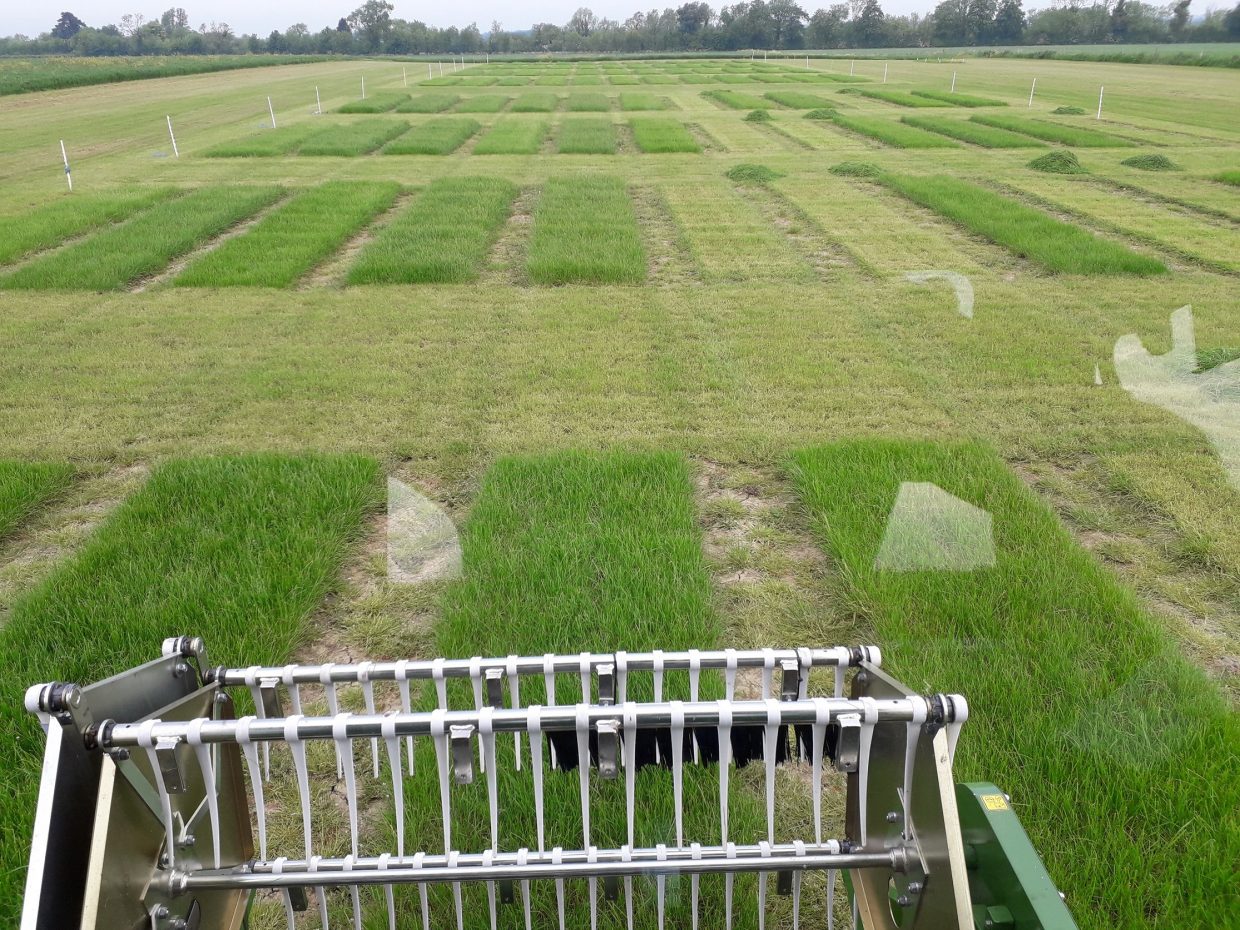The cutting edge: Optimising sward performance in frequent cutting systems
The paper “An assessment of herbage mass, ryegrass type, and red clover inclusion on sward productivity, quality, and morphology under a cutting protocol“, published in The Journal of Agricultural Science, has been chosen as the latest Editorial Highlight and is available open access.
Sward composition and management play a major role in the quantity and quality of herbage grown on farms in temperate regions. While best practices for both livestock grazing and ensiled forage production are well documented in this regard, less is known about the optimum composition and management of swards used in frequent cutting systems. In these ‘cut-and-carry’ systems fresh pasture is cut daily and fed directly to cows in the barn, and swards are typically cut up to 10 times during the growing season between early spring and late autumn. In contrast to conventional grazing, swards in cut-and-carry systems are harvested using specialised machinery and a consistent post-cutting sward height can be achieved regardless of pre-cutting herbage mass. This in theory, may present an opportunity to increase pre-cutting herbage mass and sward dry matter production without negatively impacting the nutritive value of subsequent sward regrowth.

The plot-based study reported here aimed to assess if cutting at a ‘high’ pre-cutting herbage mass (2142 kg DM/ha; HHM) would improve seasonal and annual sward production, nutritive value, and morphology in comparison to a ‘low’ pre-cutting herbage mass (1489 kg DM/ha; LHM). In order to identify suitable swards for use in cut-and-carry systems, the study also incorporated an examination of three different ryegrass cultivars (diploid perennial, tetraploid perennial, and hybrid) sown both as monocultures and as mixed ryegrass-red clover swards. Plots were harvested according to pre-cutting herbage mass from March-November in 2018 and 2019.

Cutting swards at HHM increased annual dry matter production by 11%, with the effect on herbage nutritive value varying depending on season and ryegrass cultivar. In early and late season herbage digestibility was similar for LHM and HHM swards across both the diploid and tetraploid cultivars, while in mid-season digestibility was significantly lower across all HHM swards. This suggests that farmers could potentially increase sward productivity in early and late season, with minimal impacts on sward nutritive value, by cutting at a high herbage mass similar to that used in this study.
While the hybrid ryegrass was the highest yielding ryegrass cultivar, it had the lowest digestibility and highest fibre content. Therefore, the use of hybrid ryegrass needs to be considered carefully as lower sward quality may negate the benefit of increased dry matter production. The tetraploid ryegrass was the most balanced in terms of yield and quality in the current study. The inclusion of red clover had a positive effect on dry matter production, and increased sward crude protein content, however mixed ryegrass-red clover swards had higher fibre content and lower digestibility than ryegrass-only swards.
In conclusion, results from this study suggest there is scope to optimise sward performance through the adoption of sward management practices specific to cut-and-carry systems.
Photos courtesy of: Conor Holohan
The Journal of Agricultural Science Editorial Highlights are selected by the Editor-in-Chief. View the recent selections here.






